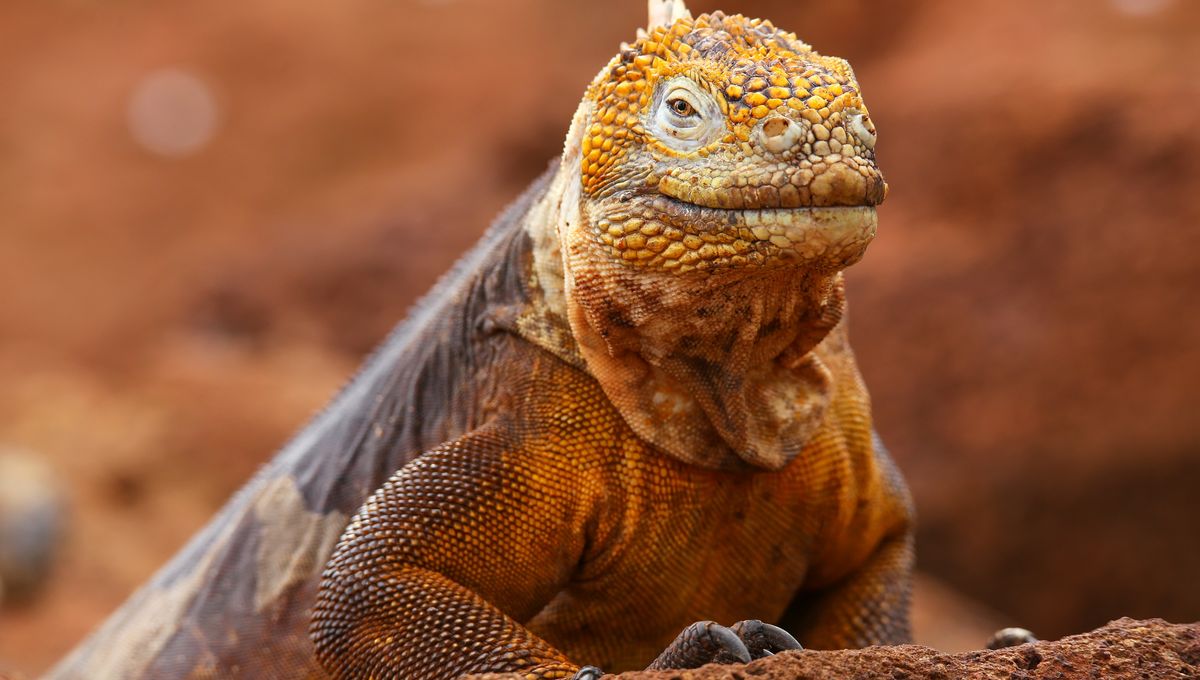
Out in the islands of the Galápagos Archipelago live 1.5-meter (5-foot) long yellow lizards who have a history – and a future – linked to the islands of Baltra, North Seymour, Fernandina, Isabela, South Plaza, Santa Cruz, and Santiago. Meet the yellow iguanas.
Also known as Galápagos land iguanas (Conolophus subcristatus), these impressively yellow lizards are one of four iguana species found sunning themselves across seven islands of the many in the Galápagos. This large reptile, once noted as “numerous” on Santiago by Charles Darwin in 1835, went extinct in the early 20th century because of competition and predation by introduced pigs, cats, and goats.
“Like their brothers the sea-kind, they are ugly animals, of a yellowish orange beneath, and of a brownish red color above; from their low facial angle they have a singularly stupid appearance,” wrote Darwin, clearly not impressed by these large reptiles.
The iguanas also had a population on Baltra, but also went extinct there as well because of introduced cats. However, on North Seymour, the iguanas were introduced by military personnel from Baltra around the time of World War II and grew to a large population of around 4,000.
However, this population is thought to be too big for the island to sustain since they were never natively found on North Seymour. There has also been some suggestion that this population has caused a decrease in the flora of the island – they are known to eat at least 30 different plant species. These iguanas have very little access to fresh water and receive almost all their moisture from consuming vegetation, in particular cacti.
After the war, the iguanas were introduced back onto Baltra and grew to a population of around 2,500 in the 1930s.
The team at the Galápagos Conservancy surveyed Santiago to review it as a possible site for yellow iguana reintroduction. They also hoped that by reintroducing the iguanas to the island they could help restore the ecological health of Santiago. Iguanas are thought to be important seed dispersers for the native plants as well as being interlinked to the bird species that live there.
“The land iguana is a herbivore that helps ecosystems by dispersing seeds and maintaining open spaces devoid of vegetation,” said Danny Rueda, the park authority’s ecosystems director told the Guardian.
In 2019 around 1,400 iguanas were released back onto the island, and after some delays due to the COVID pandemic, researchers were eventually able to return to monitor the population. They were pleased to discover juvenile iguanas and breeding taking place 187 years after the species went extinct there.
“This is a major conservation achievement, and strengthens our hopes of restoring islands that have been severely affected by introduced species,” said Danny Rueda Córdova, of Galápagos National Park, on the Galápagos Conservation Trust website.
Source Link: The Fascinating History Of The Yellow Iguanas Of The Galápagos